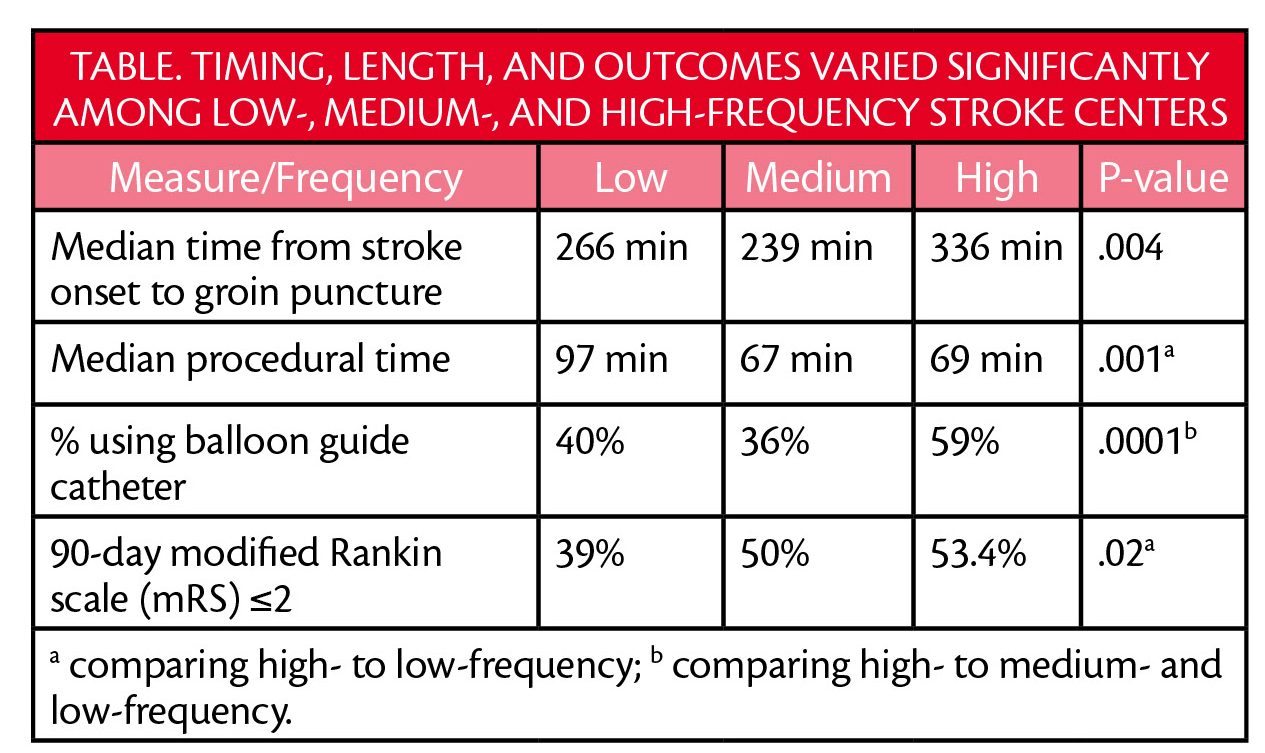Higher Patient Volumes for Stroke Centers Correlates with Improved Mechanical Thrombectomy Outcomes
As published in the journal Stroke, data from the 24 sites in the TRACK study (NCT02040259) show that medium-to-high treatment volume correlates with improved outcomes of mechanical thrombectomy. Each site in the study was identified as low- (< 2 cases/month), medium- (2-4 cases/month), or high-volume (> 4 cases/month).
Baseline features, imaging, and outcomes were collected for 624 individuals treated. Of those treated, 188 (30.1%) had care at low-volume centers, 175 (28.1%) and 261 (41.8%) at high- volume centers. Time to treatment, length of procedure, use of balloon catheters, and outcomes varied significantly amongst the 3 groups (Table). After multivariable adjustment, those treated in the high- or medium volume centers were 67% to 75% more likely to have a good outcome compared with those treated in low-volume centers (P = .04 and .03, respectively). Outcomes in medium- vs high-volume centers did not differ significantly.

The baseline NIHSS score was 16.8 to 17.6, which also was not significantly different across groups. Occlusion sites did not vary significantly amongst the 3 groups and the mean age of individuals treated was 65 to 67 with no significant difference age across the groups. No significant differences in intracranial hemorrhage or 90-day mortality was seen across the 3 groups.
